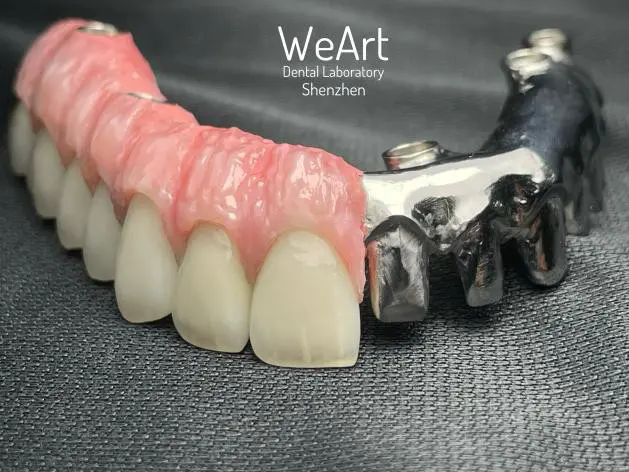What Is Implant Restoration ?
2025-09-04
Dental health plays a critical role in overall well-being, and when tooth loss occurs due to decay, injury, or disease, restoring both function and appearance becomes a priority. Among the many solutions available today, implant restoration has emerged as one of the most advanced, reliable, and natural-looking options. But what exactly is implant restoration, how does it work, and why has it become the preferred choice for dentists and patients worldwide?
What Is Implant Restoration and Why Is It Important?
Implant restoration refers to the process of replacing missing or damaged teeth with artificial teeth anchored securely by dental implants. A dental implant itself is a small titanium post or screw surgically placed into the jawbone to act as a substitute for the root of a missing tooth. The restoration process involves attaching a custom-designed crown, bridge, or denture to this implant, ultimately creating a natural, durable, and functional tooth replacement.
Why Choose Implant Restoration Over Traditional Solutions
Unlike dentures or dental bridges, implant restorations are permanently anchored to the jawbone, offering several key advantages:
-
Natural Look & Feel: Mimics the appearance, texture, and functionality of natural teeth.
-
Durability: With proper care, dental implants can last 15 to 25 years or more.
-
Bone Preservation: Helps prevent bone loss, which commonly occurs after tooth loss.
-
Enhanced Oral Health: Unlike bridges, implants don’t require grinding down healthy adjacent teeth.
-
Confidence Boost: Restores the patient’s ability to smile, chew, and speak naturally.
Who Is a Good Candidate for Implant Restoration
Not everyone qualifies for dental implants. Ideal candidates typically:
-
Have one or more missing teeth
-
Maintain good oral hygiene and healthy gums
-
Possess adequate bone density to support the implant
-
Do not suffer from uncontrolled chronic conditions like diabetes
-
Are non-smokers or willing to quit smoking
How Does the Implant Restoration Process Work?
Implant restoration is not an overnight procedure; it involves a series of carefully planned stages designed to ensure the best possible outcome. Below is a detailed breakdown of the process:
Initial Consultation and Examination
-
Comprehensive Oral Evaluation: Includes X-rays, 3D imaging, and dental impressions.
-
Treatment Planning: A personalized restoration plan based on the patient’s unique dental needs.
Implant Placement Surgery
-
A titanium implant is precisely inserted into the jawbone under local anesthesia or sedation.
-
Healing time varies, typically requiring 3 to 6 months for osseointegration — the process where the implant fuses with the bone.
Abutment Placement
-
Once the implant integrates, an abutment (connector) is attached to hold the restoration securely.
Custom Restoration Attachment
-
A dental crown, bridge, or denture is fabricated based on the patient’s bite, shape, and color preferences.
-
Final adjustments ensure perfect alignment and comfort.
Implant Restoration Material Specifications
Choosing the right material is vital for durability, aesthetics, and long-term performance. Below is a comparison of the most commonly used materials in implant restorations:
| Component | Material | Key Features | Lifespan |
|---|---|---|---|
| Implant Post | Titanium / Zirconia | Biocompatible, lightweight, high strength | 15–25+ years |
| Abutment | Titanium / Ceramic | Connects implant to crown; ceramic offers better aesthetics | 10–20 years |
| Crown | Porcelain / Zirconia | Natural appearance, stain-resistant, durable | 10–15 years |
| Bridge | Porcelain-fused-to-metal / Zirconia | Ideal for multiple missing teeth replacement | 10–20 years |
| Denture | Acrylic / Composite | Lightweight, easy to adjust, cost-effective | 5–10 years |
Advanced Implant Technologies
-
Computer-Guided Surgery: Enhances precision and minimizes recovery time.
-
Immediate Load Implants: Allows same-day crown placement in selected cases.
-
Mini Implants: Ideal for patients with insufficient bone density.
Implant Restoration FAQs
FAQ 1: How long does an implant restoration last?
Answer: With proper care, dental implants can last for decades — typically 15 to 25 years or longer. Factors such as oral hygiene, bone health, and lifestyle habits like smoking can influence their longevity. Regular dental check-ups and professional cleaning are critical for maintaining implant health.
FAQ 2: Is implant restoration painful?
Answer: The procedure is generally minimally painful thanks to local anesthesia and sedation options. Most patients report feeling pressure rather than pain during surgery. Post-surgery discomfort is mild and can be managed with over-the-counter pain relievers. Within a few days, most patients return to normal activities.
Why Choose WeArt for Implant Restoration
When selecting a dental solutions provider, quality, innovation, and patient satisfaction are key. At WeArt, we are dedicated to delivering exceptional implant restoration solutions using cutting-edge technology, premium-grade materials, and patient-focused care. Our products are designed to meet international safety and quality standards, ensuring long-lasting performance and a natural, confident smile.
From customized crowns and bridges to full-mouth restoration solutions, WeArt offers a comprehensive range of products tailored to individual needs. Our team of experts works closely with dental professionals worldwide to provide precise, durable, and aesthetic restorations.
If you are ready to restore your smile and regain your confidence, contact us to learn more about WeArt’s implant restoration solutions and schedule a consultation.
